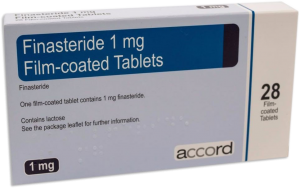Is Baldness Hereditary?
Lustrous thick hair, porcelain skin and lean body structure have always been a sign of beauty for human kind. But these are not only a symbol of beauty but also a marker of overall health, vitality and youthfulness. Frizzy dry thinned hairs and break out acne prone skin tells a lot about the internal health of person. Our life style is the first thing that has contributed to hair and skin problem. These problems were almost non-existent for our ancestors and they were even able to maintain good hair and skin long into their middle age.
The first question that may arise in the mind of a person with hair problems would be is it hereditary? It is easy to blame every problem on bad genes and then pretend like there is no solution to the problem. But we are here to discuss this problem in detail and also provide with a solution.
Our hairs grow from a tiny socket or pit in our head which is called as hair follicle. Over time if this follicle shrinks or reduces in size it grows fine and thin hair and ultimately gives rise to baldness.
Baldness is not always hereditary although it is true that it effects more men than women. And in men it is mostly hereditary as well. But there can be many causes for baldness and not every cause has its links with genetics. Sometimes baldness has to do with hormones or medications and other times certain treatments might also cause it. Our lifestyle and diet has become so sedentary and processed respectively that it has effected almost every single facet of our lives. Health problems that were not present fifty years ago are so common now that they can even be seen in children. Some lifestyle diseases have now become so common that we have almost become immune to them to the degree that we don’t even consider them to be a disease and thinned hairs, hair fall is one of them.
Let’s see at what are different types of hair loss, what are the main causes of hair loss and how can it be prevented?
Normal stages of hair growth
Our hairs go through a cycle of a growth phase, transitional phase and a shedding phase. If any one of these stages is effected then it in turn effects the hair growth and hair fall and even baldness. Scientifically these stages are termed as;
Anagen phase:
The anagen phase is also called as the growth phase. Hair starts to grow in the hair follicle and continues to grow. Cells in the papilla of the hair follicle divide and disintegrate and contribute to the growth of the hair. The longer a hair will stay in the growth phase the longer will be its growth. This phase is also governed by the genetics of a person. Hairs grow approximately one cm each month. Approximately 85-90% of the hairs on the head are in the growth phase at any given point of time.
Catagen phase:
This is a phase when hair growth stops itself and the hair follicle starts to shrink. Usually in this phase the blood supply to the hair is stopped and hair is pushed upwards. This upward pushing of hair is due to the follicle shrinkage and it prepares itself to become dormant. The cells in the papilla also detach themselves from the hair and now hair enters in the phase of shedding. Catagen phase is also called as transitional phase.
Telogen Phase:
This phase is normal shedding phase of the hair. Here hair follicles go in dormant phase and resting phase. And hair fall out but this falling of hair is normal and they fall out after completing a normal hair cycle. After resting phase of the hair follicle is finished it will again prepare itself for another hair growth.
This was the normal cycle that a hair goes through. Any problem in this cycle due to genetics, hormones, medications, radiations or any other kind of treatments may lead to baldness or hair loss.
Click HERE to View Finasteride Prices > >
Type of baldness / hair loss
Thinning of the hair
This problem occurs when the hair cycle instead of remaining in the anagen phase, quickly enters in the telogen phase. Telogen phase is also called as the shedding phase of the hair. This condition is sometimes referred to as Telogen Effluvium.
It usually occurs if body has undergone a stress. This stress can be emotional, physical or psychological. Emotional stress can be a traumatic event in the life and physical stress can be a manifestation of malnutrition, deficiency of vitamins and minerals and diseases such as high fever. Even pregnancy can lead to severe hair loss.
Telogen effluvium is not a genetic condition and is a reversible condition. There are just very rare instances in which the cause of thinning of hair remain unknown.
Usually it is treatable by addressing the problem behind the hair loss. Usually taking supplements like minerals, vitamins can reverse the condition. It is known that folic acid, iron and vitamin D can quickly reverse the hair loss.
Usually different tests are also done that help determine the cause behind sudden hair loss. If the cause still remains unknown then a biopsy may also be done by taking small amount of dermis layer can examining it.
Male pattern baldness:
 Male pattern baldness occurs in a classical fashion. It is the most common sight of men with hair loss. It begins with their hair line moving backwards or receding with time. The hairs at the temple and back of head become very fine and fall out easily. While the top of the scalp is seen to be bald completely. The type of hair loss that one might suffer from is usually distinguished based on the pattern of hair loss and fine hairs on the head 3. This male pattern baldness has two main causes, one is hormonal and second one is hereditary or genetic cause.
Male pattern baldness occurs in a classical fashion. It is the most common sight of men with hair loss. It begins with their hair line moving backwards or receding with time. The hairs at the temple and back of head become very fine and fall out easily. While the top of the scalp is seen to be bald completely. The type of hair loss that one might suffer from is usually distinguished based on the pattern of hair loss and fine hairs on the head 3. This male pattern baldness has two main causes, one is hormonal and second one is hereditary or genetic cause.
Men hormones highly influence the baldness. The free testosterone in men or unbound testosterone converts to dihydrotestosterone that stops the differentiation of follicles present in the head. Although the exact mechanism is unknown and co relation of dihydrotestosterone and baldness is a complex one, it is said that it makes the hair follicles sensitive to hormone and subsequently they produce thin hair and even baldness. Testosterone is converted to dihydrotestosterone via an enzyme called as 5-alpha reductase. Now dihydrotestosterone is a very important male hormone and not producing that hormone in body may itself lead to many problems. So one shouldn’t think that not having this hormone might solve the problem. The correlation of baldness and male hormone is a very complex one and still something that remains unclear and studying are still being conducted on this correlation.
The second cause is genetic cause. If your dad or grand dad had problems with baldness it is more likely that you may face these problems in future as well.
We know that the chromosomes that determine if someone is female is XX and if someone is born a male is XY. According to a popular scientific belief the baldness gene is on X chromosome. Now if a woman has inherited X chromosome with baldness gene from her dad it is very less likely that it will affect her because she has two pair of X chromosomes and the so called ‘faulty’ chromosome acts like a recessive gene in her. But if a male has inherited X chromosome either form his dad or mom the baldness gene is more likely to act as a dominant gene in them because there is only one X chromosome. That’s why baldness more often affects men than women.
There is a scale to determine the amount of hair loss that has taken place on head. It is called as Hamilton-Norwood scale.
Female pattern baldness:
Female pattern baldness is uncommon but affects women of different age group. Usually women in her 60s are most likely to be affected by it. Female pattern baldness is different than male pattern baldness in a sense that women don’t usually go entirely bald but their hair loss shows itself as very fine, thin and easily breakable hairs. The hair line doesn’t recede but the top of the scalp usually has large patches of hair loss. This pattern is classified as a Christmas tree pattern of hair loss in the head.
Testosterone is a hormone that may affect hair loss in women. Although this hormone is present in very low amounts in women but it may still affect them. The reason behind hair loss in women still remains unclear.
The scale for determining the female pattern baldness is Ludwig scale.
Alopecia Areata:
Alopecia areata is a very peculiar hair loss pattern not found in many people. It is hair loss in just one spot of scalp. It is also called as Spot baldness. It is known to be an autoimmune disease and the numbers affecting males and females is almost equal. It is a condition in which the body’s own lymphocytes or defence cells destroy the hair follicles. There are certain risk factors that may contribute to the disease as well like having diabetes type I, rheumatoid arthritis or gluten intolerant celiac disease. The superficial skin usually looks normal but the person may feel a tingly feeling or pain after the hair has fallen off the patch. That pain is attributed to the inflammation caused due to attacking of the defence cells T-lymphocytes.
Alopecia areata may affect few spots on the scalp or it may also affect the entire scalp. This disease may also affect the entire body and all of the hair are lost including the pubic hairs but this condition is very rare and is called as Alopecia areata totalis. This condition is not contagious.
Hair Loss due to fungal infection:
There are different types of fungal infections that might affect the hair growth on the scalp.
The most famous one is a ringworm infection. Ringworm infection contrary to its name is not caused by a ring worm. It is a fungal infection and similar to the one like athletes foot. It is called ring worm because it occurs in white patches of rings. If it affects the scalp it can cause a serious itchy scalp with red bald patches and pain. It is a reversible condition and when proper antibiotics are given the condition is cured. There can be many environmental factors that can cause a person to contract a fungal infection. Usually pets especially cats are common carriers of this infection. Eating uncooked meat might also cause many problems and fungal infection is one of them. It is spread form one person to another via contact so care should be taken when handling such a patient.
Sometimes it gets difficult to diagnose a fungal infection because it looks like a bad dandruff or unexplained hair loss with no redness or inflammation.
Another infection that may cause baldness in form of patches on the scalp is folliculitis. Folliculitis as the name indicates is the infection of the hair follicles. The follicles become inflamed and as a result the hairs fall out. It is very rare to contract a folliculitis that leads to permanent baldness but swimming in contaminated water is a common source of this infection. Other forms of folliculitis are non-infectious ones that are caused by clogged pores. This is manifested as acne or small red bump surrounding the hair follicle.
Hair Loss due to Chemotherapy:
Hairs are also lost due to chemotherapy. The anti-cancer therapy works by inhibiting the fast dividing cancer cells. These medications are nonspecific in their action and therefore affect all the cells of the body including the hair as hair follicles are fast dividing cells. That’s why usually after starting chemotherapy all the hairs of the head are fallen off but they regrow once the therapy is stopped.
Food and lifestyle changes that affect hair loss
 We all know how sedentary and in active our lives have become. Exercise is nearly nil. And we now spend most of our times indoors either in front of TV, computers or video games. When there is no physical activity our body doesn’t readily assimilate the nutrients that we get from food. When proper nutrients don’t reach our blood stream our entire body is affected and hair growth is one of them. Our hair is made up of protein and when we don’t receive sufficient amounts of wholesome nutrients from our diet not only growth but quality of our hairs is also affected as a result hairs are fine and dull and easily breakable and we also contract different infections easily.
We all know how sedentary and in active our lives have become. Exercise is nearly nil. And we now spend most of our times indoors either in front of TV, computers or video games. When there is no physical activity our body doesn’t readily assimilate the nutrients that we get from food. When proper nutrients don’t reach our blood stream our entire body is affected and hair growth is one of them. Our hair is made up of protein and when we don’t receive sufficient amounts of wholesome nutrients from our diet not only growth but quality of our hairs is also affected as a result hairs are fine and dull and easily breakable and we also contract different infections easily.
Our diet has also become so processed and artificial and lab based that our bodies are not getting the nutrients it is designed for. Nature has everything but we have destroyed nature with our own hands. And instead of eating fresh fruits and vegetables we pop multi vitamin pills and rely on other sources of artificial nutrition. Every single thing in our diet is artificial, processed and full of sugars. That increase the oxidative stress on body and as a result every part of our body is affected even the hairs. The problem with multi vitamin pills is that the amount it comes in is insufficient for our bodies and the natural vitamin molecule can only be taken by eating fresh fruits and vegetables. Few decades ago eating right was just common sense because it had everything freshly prepared in the kitchen. Now a days dieticians have to give lectures on how to eat fresh and home cooked.
Hygiene is also an important aspect in hair loss. Make sure the hairs are washed regularly. The towels used for drying of hairs are also washed. Bedsheets, pillow cases should also be clean.
Treatment:
Following are the treatment options for some of the conditions stated above.
| Thinning of hairs |
|
| Male pattern baldness |
|
| Female pattern baldness |
|
| Alopecia areata |
|
| Ringworm fungal infection |
|
| Folliculitis |
|
| Chemotherapy |
|
Click HERE to View Finasteride Prices > >
References:
- https://en.wikipedia.org/wiki/Human_hair_growth
- https://www.aocd.org/page/TelogenEffluviumHa
- https://ghr.nlm.nih.gov/condition/androgenetic-alopecia#synonyms
- https://genetics.thetech.org/original_news/news100
Mens Pharmacy is not liable for the currency or accuracy of the information contained in this blog post. For specific information about your personal medical condition, please contact our doctors or pharmacists for advice on [email protected].

